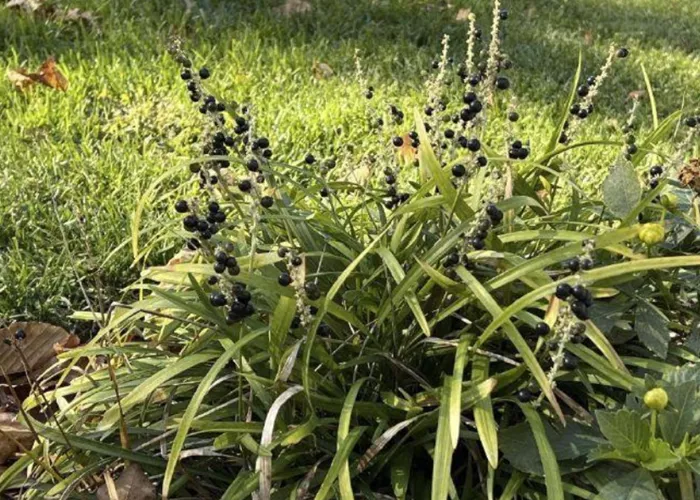Lately, I’ve been taking my 12-year-old Havanese, Miguel, on 3,500-step walks around the neighborhood, telling myself he’s the only one who can’t handle longer strolls. As the weather cools, I’ve noticed that some of the plants we pass by are looking very different from their summer forms.
While most perennials are drying up, and trees and shrubs are shedding leaves and changing colors here in suburban New York, there’s something else I’ve observed.
Some plants, typically grown for their foliage, bloom late in the season.
For example, a coleus that was originally chosen for its striking maroon leaves with chartreuse edges is now producing 2.5-foot-tall spikes of tiny purple flowers. While these blooms may catch the eye, they might not be the desired feature. Many plant catalogs and nursery tags only show the foliage, not the flowers.
Caladiums, known for their large, colorful, heart-shaped leaves, also bloom. Their white or pink flowers are reminiscent of a cross between a calla lily and a flamingo flower. This isn’t a coincidence, as all three plants belong to the Araceae family. While calla lilies and flamingo flowers are grown for their blooms, gardeners often remove caladium flowers to focus the plant’s energy on its leaves and corms.
Another relative, Alocasia, or elephant ears, also produces similar blooms, though smaller and less consistent.
Some gardeners even remove flower spikes from hostas, which I find puzzling. I love the purple or white flowers that bloom from my own hostas, and I consider them the highlight of the plant.
Lamb’s ear (Stachys byzantina) is another plant where gardeners often remove the flower stalks. While its thick, velvety, silver leaves are the main attraction, I enjoy its late-summer, pinkish-purple blossoms. Of course, it’s all a matter of personal preference.
Rex begonias, which thrive in shady spots outdoors or as houseplants, are prized for their striking foliage—ranging from red to purple to silver with unique patterns. Their small pink or white flowers, however, are often considered unremarkable compared to the leaves.
Liriope, also called monkey grass, is a low-growing groundcover that blooms in late summer. Its small purple or white flowers eventually give way to nearly black berries in the fall. However, gardeners should be cautious about Liriope spicata, which has running roots that can take over a garden if left unchecked.
Some plants save their flowers for earlier in the season.
For instance, Siberian bugloss (Brunnera) is admired for its green and silver or white variegated leaves that brighten shady areas throughout the growing season. It also produces small, light blue flowers in spring.
Mature boxwoods also bloom in the spring, often surprising their owners with small yellow-green clusters of flowers.
Although Heuchera (coral bells) is mainly grown for its colorful, often ruffled foliage, it does produce flower spikes that rise above the mound of leaves from late spring to summer. While some of these flowers are attractive, others can be rather unappealing, so it’s important to research flower color before choosing a variety.
Overall, whether flowers appear in the spring or fall, many plants offer an unexpected floral bonus to their usual foliage displays.
Related topics:
- Devastating Declines: New Data Shows Why So Many Plants and Animals Struggle After Wildfires
- How Plant Roots Shift Their Growth During ‘Puberty’ and What It Means for Climate-Resilient Farming
- SIU’s Touch of Nature: Eradicating Invasive Plants and Reviving Native Flora and Wildlife


